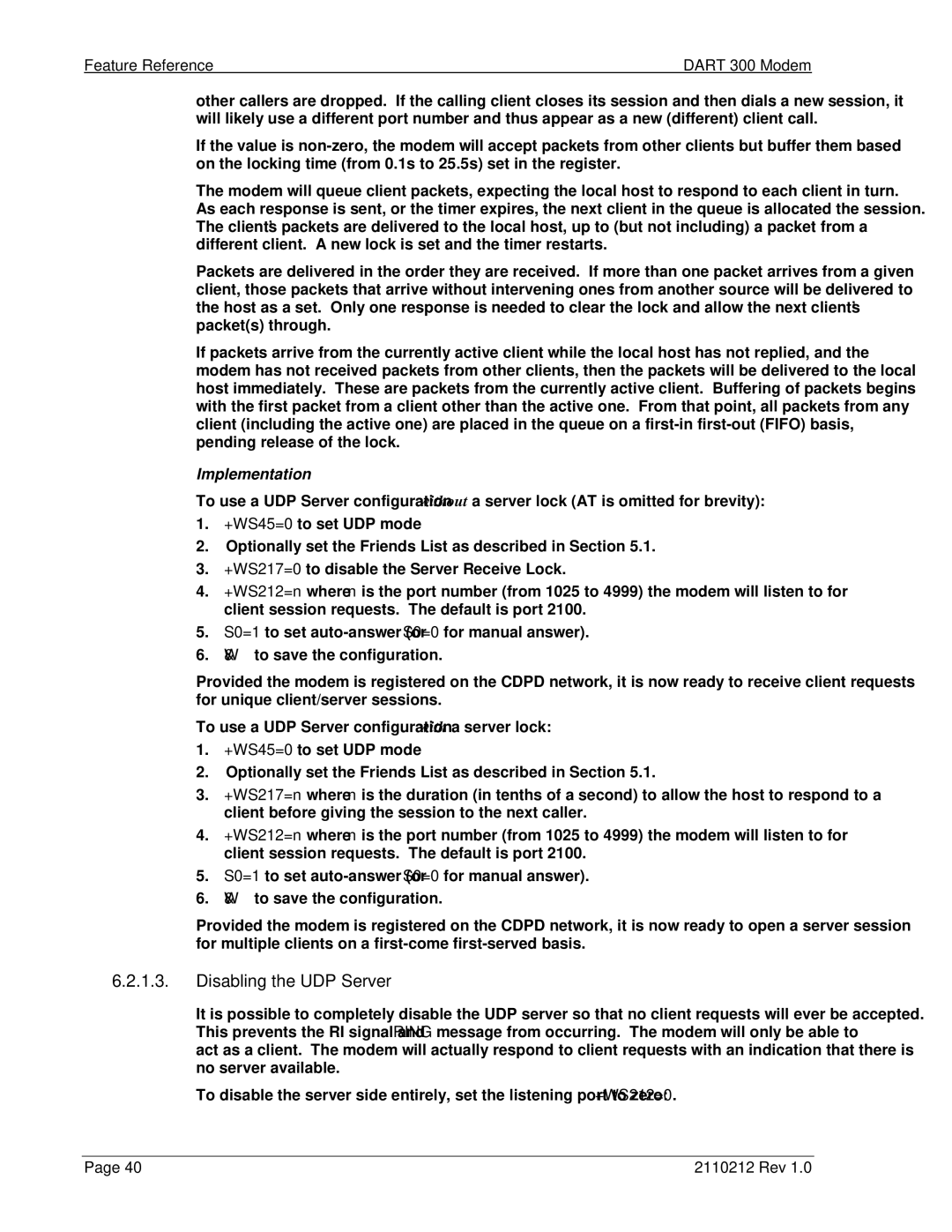Feature Reference | DART 300 Modem |
other callers are dropped. If the calling client closes its session and then dials a new session, it will likely use a different port number and thus appear as a new (different) client call.
If the value is
The modem will queue client packets, expecting the local host to respond to each client in turn. As each response is sent, or the timer expires, the next client in the queue is allocated the session. The client’s packets are delivered to the local host, up to (but not including) a packet from a different client. A new lock is set and the timer restarts.
Packets are delivered in the order they are received. If more than one packet arrives from a given client, those packets that arrive without intervening ones from another source will be delivered to the host as a set. Only one response is needed to clear the lock and allow the next client’s packet(s) through.
If packets arrive from the currently active client while the local host has not replied, and the modem has not received packets from other clients, then the packets will be delivered to the local host immediately. These are packets from the currently active client. Buffering of packets begins with the first packet from a client other than the active one. From that point, all packets from any client (including the active one) are placed in the queue on a
Implementation
To use a UDP Server configuration without a server lock (AT is omitted for brevity):
1.+WS45=0 to set UDP mode
2.Optionally set the Friends List as described in Section 5.1.
3.+WS217=0 to disable the Server Receive Lock.
4.+WS212=n where n is the port number (from 1025 to 4999) the modem will listen to for client session requests. The default is port 2100.
5.S0=1 to set
6.&W to save the configuration.
Provided the modem is registered on the CDPD network, it is now ready to receive client requests for unique client/server sessions.
To use a UDP Server configuration with a server lock:
1.+WS45=0 to set UDP mode
2.Optionally set the Friends List as described in Section 5.1.
3.+WS217=n where n is the duration (in tenths of a second) to allow the host to respond to a client before giving the session to the next caller.
4.+WS212=n where n is the port number (from 1025 to 4999) the modem will listen to for client session requests. The default is port 2100.
5.S0=1 to set
6.&W to save the configuration.
Provided the modem is registered on the CDPD network, it is now ready to open a server session for multiple clients on a
6.2.1.3.Disabling the UDP Server
It is possible to completely disable the UDP server so that no client requests will ever be accepted. This prevents the RI signal and RING message from occurring. The modem will only be able to act as a client. The modem will actually respond to client requests with an indication that there is no server available.
To disable the server side entirely, set the listening port to zero: +WS212=0.
Page 40 | 2110212 Rev 1.0 |
